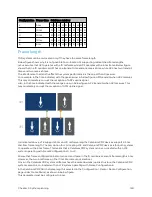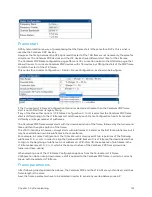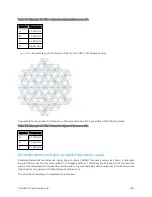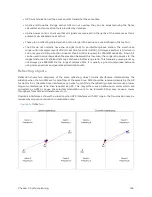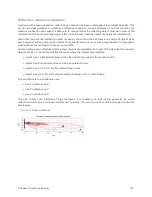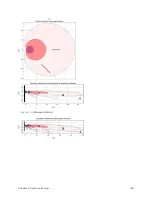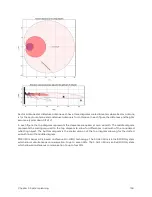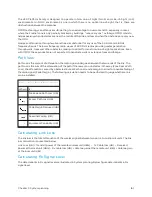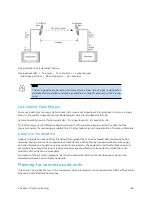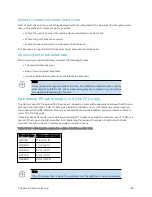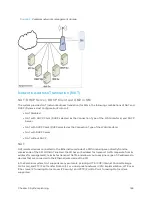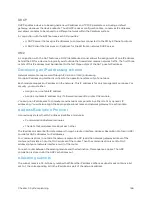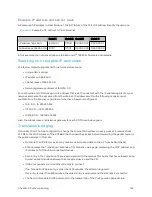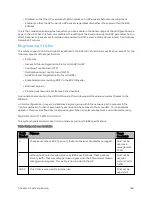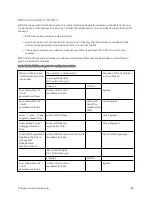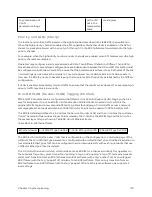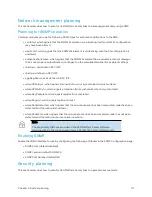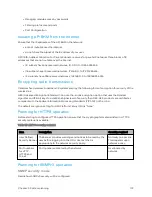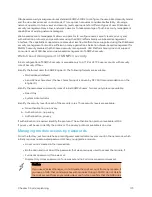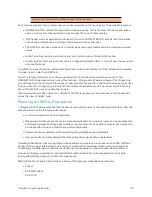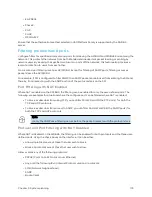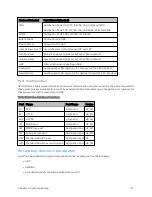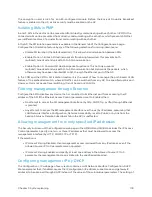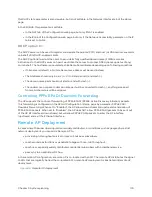
Chapter 3: System planning
164
then the network operator must assign the computer a static IP address in the
same subnet.
Dat a net w o rk p lanning
This section describes factors to be considered when planning 450 Platform Family data networks.
Und er st and ing ad d r esses
A basic understanding of Internet Protocol (IP) address and subnet mask concepts is required for
engineering your IP network.
IP address
The IP address is a 32-bit binary number that has four parts (octets). This set of four octets has two
segments, depending on the class of IP address. The first segment identifies the network. The second
identifies the hosts or devices on the network. The subnet mask marks a boundary between these two sub-
addresses.
Dynam ic or st at ic ad d r essing
For any computer to communicate with a module, the computer must be configured to either
l
use DHCP (Dynamic Host Configuration Protocol). In this case, when not connected to the network,
the computer derives an IP address on the 169.254 network within two minutes.
l
have an assigned static IP address (for example, 169.254.1.5) on the 169.254 network.
W hen a DHCP server is not found
To operate on a network, a computer requires an IP address, a subnet mask, and possibly a gateway
address. Either a DHCP server automatically assigns this configuration information to a computer on a
network or an operator must input these items.
When a computer is brought on line and a DHCP server is not accessible (such as when the server is down
or the computer is not plugged into the network), Microsoft and Apple operating systems default to an IP
address of 169.254.x.x and a subnet mask of 255.255.0.0 (169.254/16, where /16 indicates that the first 16
bits of the address range are identical among all members of the subnet).
DNS Client
The DNS Client is used to resolve names of management servers within the operator’s management
domain (see Cambium networks management domain). This feature allows hostname configuration for
NTP servers, Authorization Servers, DHCP relay servers, and SNMP trap servers. Operators may choose to
either enter in the FQDN (Fully Qualified Domain Name) for the host name or to manually enter the IP
addresses of the servers.
Summary of Contents for PMP 450 Series
Page 92: ...Chapter 2 System hardware 92 Figure 29 MicroPoP Omni antenna implementation pattern Vertical...
Page 134: ...Chapter 3 System planning 134 Figure 51 Mast or tower installation...
Page 135: ...Chapter 3 System planning 135 Figure 52 Wall installation...
Page 136: ...Chapter 3 System planning 136 Figure 53 Roof installation...
Page 137: ...Chapter 3 System planning 137 Figure 54 GPS receiver wall installation...
Page 158: ...Chapter 3 System planning 158 Figure 61 cnMedusa Antenna...

